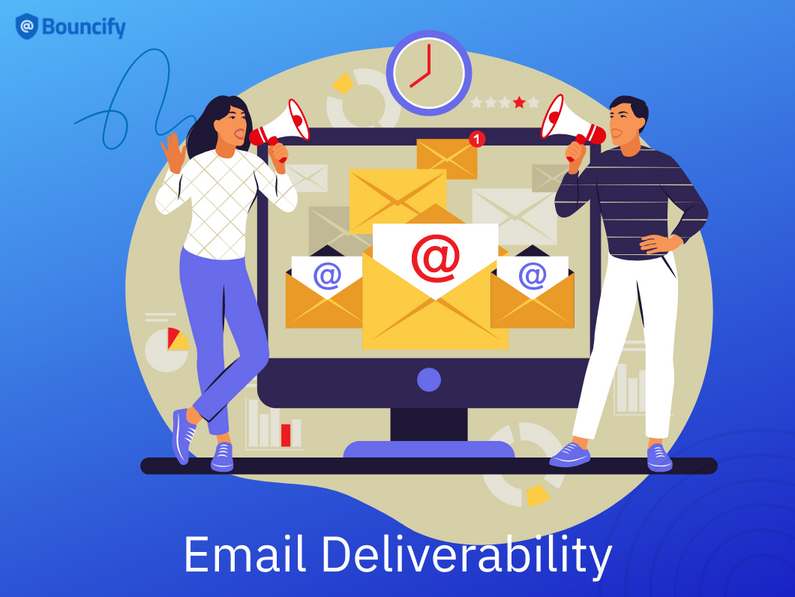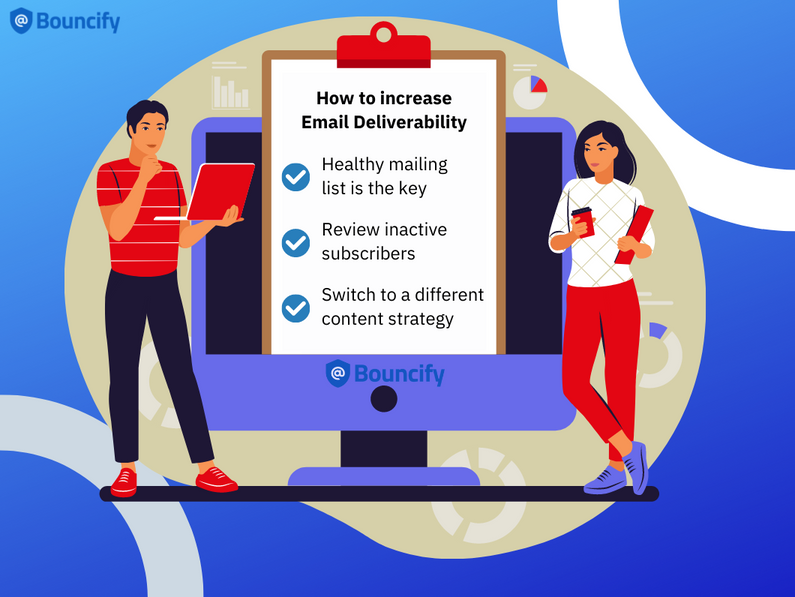How to increase your Email Deliverability?

Even the best emails disappear when they become spam. Here are three easy steps to increase your Email Deliverability.
You can rest assured that your email provider will let you know that your email has been delivered. They believe that the time and effort put into the newsletters and campaigns will pay off.
However, "delivered" is a rather fuzzy term in email marketing. This means that your email landed in someone's address, but did it end up in their inbox or their spam folder?
Here are the facts:
21% of marketing emails never reach your inbox. Some get lost or end up in the junk folder while being reported as "delivered".
To improve your inbox placement, you must first understand:
Deliverability and reachability are often confusing when it comes to email marketing. Knowing the difference between these two gives you a more realistic picture of your email performance.
Reachability refers to the number of recipients who can receive your emails whereas Deliverability refers to the number of emails that reached your subscribers' inboxes. This just means that the email did not bounce, we do not know where it was sent (inbox or spam).
The delivery rate reflects the number of emails that reach a subscriber's inbox. Marketers also refer to email deliverability as "inbox placement."
Why is the performance needs to distinguish between two metrics, it is simple:
Even if your deliverability rates seem stable, you may have a deliverability issue that you do not know you have. Here are three methods to improve your Email Deliverability.

1. Healthy mailing list is the key -
Ask any email marketer and they will tell you:
The best way to improve your deliverability is by using an Email Verification Tool. So, if you're getting an unusual number of bounces (more than 2% per email) or your open rates are dropping, the first place to look is your database. This pandemic has further accelerated data degradation. So, scrub your mailing list to filter out invalid contacts before sending another email.
Also, watch out for spam complaints.
You should not receive more than one complaint per 1,000 emails. Any more complaints will hamper your sender's reputation as a sender is at risk. Spam complaints are the biggest contributors to inbox rankings, second only to bounces. If classified as spam, the inbox provider uses this feedback to route the message to the correct folder (in this case, the spam folder).
A reliable email address verifier can not only remove invalid contacts from your list but also detect people who have marked emails as spam in the past. This allows you to prune them and avoid risks.
2. Review inactive subscribers
What do we do with subscribers who are not engaging with our emails? Marketers often ask this question, and the answer is not always easy.
A good place to start is by analyzing the journey these subscribers are taking with your brand. That way, you will know when they've stopped engaging and if there's any chance of getting them back.
Delete people who have never opened your email
Some people may subscribe to your list to download free content. If they have never opened another email from you, feel free to delete it. They are a waste of resources and can eventually bounce back and damage your reputation and inbox rank. This is one reason to clean up your mailing list, by removing inactive subscribers as well as inactive contacts.
Additional Tip:
Subscriber activity details
Now all subscribers can email their feedback on their activity. ESP data shows how active your subscribers have been in the last 30-365 days.
Appeal to people who have stopped opening your sent emails.
Next, look at subscribers who haven't opened an email in 90 days or more. If they were active and even bought before, they are more likely to click again.
The best tactic is a re-engagement campaign.
A series of emails with offers worth coming back for. Once the campaign is complete, remove users who have not yet clicked. You are better off without each other.
Conclusion:
Avoiding deals with inactive subscribers will lower your inbox rankings. These people will tell your inbox provider that your content is not interesting, so your emails will become spam. There is a possibility.
3. Switch to a different content strategy
What are the best marketing emails you receive and what makes them click every time? In my case, I know that reading this email has something to do with it.
With about 122 emails per day in the average inbox, businesses need to do more to keep their subscribers open. The most effective strategy is to be consistent, especially when it comes to the quality of the content you send. Many marketers fall into the trap of having to focus on promotional content to sell more products. Having a promotional calendar is important, but no one signs up and is overwhelmed by an avalanche of promotions. To build engagement, you need help, and that help does not always come in the form of discounts.
Instead, it can be information worth sharing only with the list.
What is the most frustrating problem facing viewers? How can you help people overcome these challenges? Make a list and add each of these topics to your content calendar.
Additional Tip:
Check blacklist status
Make sure that the IP address or domain is not in the email blacklist. The blacklist monitoring tool runs daily checks and alerts you if your emails are likely to be blocked.